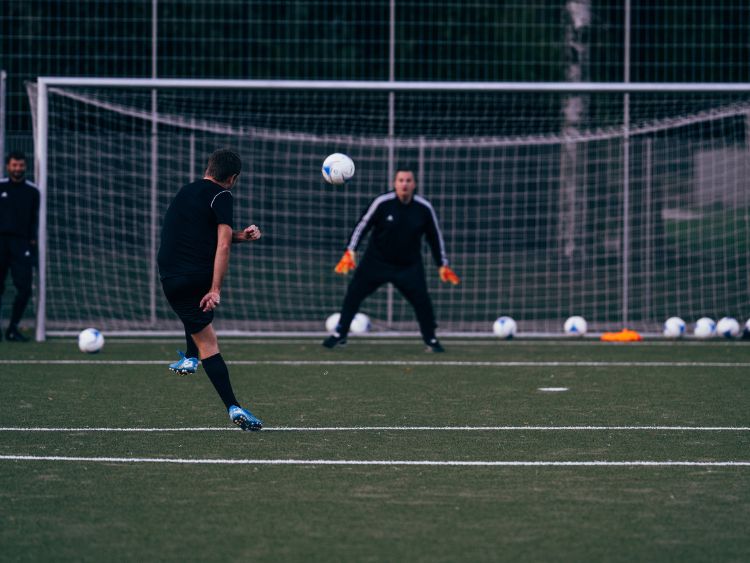Why Sports Photography Matters
Sports photography is all about seizing those fleeting moments that tell a powerful story—a victory scream, a leap over a hurdle, or the grit on an athlete’s face. Unlike other types of photography, sports photography presents a unique set of challenges. The action is fast-paced, and the subjects are often unpredictable. But for photographers who thrive on energy and intensity, it’s an incredibly rewarding field.
So, if you’ve ever wondered how professionals capture those breathtaking action shots, this guide is for you! From essential gear to insider tips, we’ll cover all the bases (pun intended) to help you master sports photography.
Essential Gear for Sports Photography
Before you start snapping, it’s crucial to have the right equipment. Here’s a list of the basics:
- Camera Body
- Fast Shutter Speed: Look for a DSLR or mirrorless camera with a high frame rate (10+ frames per second).
- Low Light Performance: Sports events, especially indoor games, often have limited lighting, so a camera with good ISO performance is essential.
- Lenses
- Telephoto Lens: For most sports, especially field events, a 70-200mm or 300mm lens is ideal.
- Wide-Angle Lens: Great for capturing the whole scene and including the audience in the background.
- Tripod or Monopod
- Helps to stabilize your shots and prevent fatigue during long events.
- Memory Cards and Extra Batteries
- Sports photography means shooting lots of photos in rapid bursts, so you’ll need extra memory and power.
- Protective Gear
- Weather can be unpredictable, and sports don’t stop for rain. Keep rain covers handy to protect your equipment.
Mastering the Technique: How to Get the Perfect Shot
Sports photography is all about timing, but there are other techniques that can make or break your shots.
1. Use a Fast Shutter Speed
Sports photography demands a quick shutter to capture sharp, action-packed images. Start at around 1/1000th of a second for high-speed sports like football or soccer.
2. Adjust Your Aperture
Keep your aperture wide open (f/2.8 or f/4) to let in more light, which is crucial for keeping up with fast action. This also creates a beautifully blurred background, making your subject stand out.
3. Set Continuous Autofocus
Predicting where an athlete will move next is tough. With continuous autofocus (AF-C mode), your camera will track the subject as they move, keeping them in focus.
4. Position Yourself Strategically
Positioning can make all the difference. Study the sport to understand where the action typically occurs, and place yourself where you’ll get the best angles and composition.
5. Capture Emotion, Not Just Action
Sports photography isn’t just about the action; it’s also about the emotion. Capturing an athlete’s expression—whether it’s joy, frustration, or determination—adds a storytelling element to your shots.
Types of Sports Photography Shots
While every sport has its unique style, some classic shots are universally admired. Here’s a rundown of popular sports photography shots:
- Action Shots: Fast-paced moments that capture peak action.
- Portraits: Close-ups of athletes showing intense emotion.
- Wide-Angle Scenes: These capture the venue, crowd, and environment.
- Panning Shots: Shows motion by keeping the subject in focus with a blurred background.
Lighting Tips for Indoor and Outdoor Sports Photography
Lighting can be tricky in sports photography, especially when shooting indoors. Here are some tips for both settings:
Outdoor Sports
- Golden Hour Magic: Early morning or late afternoon provides softer light and helps avoid harsh shadows.
- Avoiding Backlight: Position yourself so the light is behind you or coming from the side for the best clarity and detail.
Indoor Sports
- Boost Your ISO: Indoor lighting is generally low, so boost your ISO to keep your shots bright.
- White Balance: Adjust your white balance to correct the color temperature, especially in artificial lighting.
FAQs on Sports Photography
Q: What’s the best camera setting for sports photography?
A: For sports, use a fast shutter speed (1/1000th of a second or higher), a wide aperture (f/2.8-f/4), and continuous autofocus.
Q: Do I need an expensive camera to start in sports photography?
A: Not necessarily! Many entry-level DSLRs and mirrorless cameras work well, as long as they offer high shutter speeds and good ISO performance.
Q: Is it better to shoot in RAW or JPEG for sports photography?
A: RAW files retain more detail and allow more flexibility in post-processing, but they take up more space. JPEGs are quicker to process but offer less flexibility. If your camera buffer and memory card can handle it, go with RAW.
Q: How can I make my sports photos stand out?
A: Capture emotion and the story behind the action, not just the action itself. Unique angles and including environmental elements like fans or stadium lighting can also add depth.
Conclusion: Bring Sports to Life Through Your Lens
Sports photography isn’t just about capturing high-speed action shots; it’s about bringing the story of the game to life. With the right gear, a little know-how, and some practice, you can master the art of sports photography. Whether you’re photographing your local little league team or covering professional sports, focus on both the action and the emotion for truly memorable shots.
Authoritative Links
- Digital Photography School: https://digital-photography-school.com
- Photography Life: https://photographylife.com
- National Geographic Photography: https://www.nationalgeographic.com/photography





